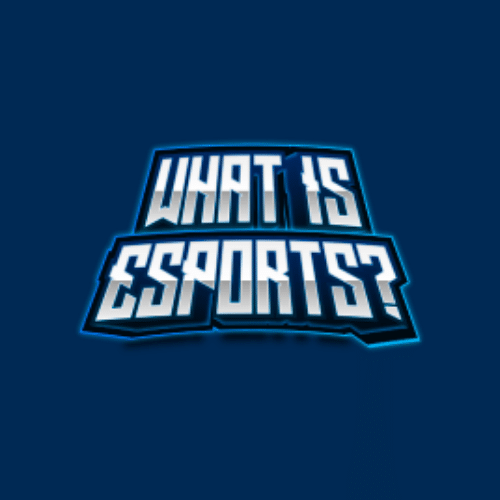Braid: Time Twisting to Unravel the Truth

Updated On: February 14, 2024 by 
Have you ever been plagued by that nagging feeling of a missed opportunity to set things right? Rest assured, it’s a sentiment shared by many. There’s an undeniable yearning within us all to rewind the clock and amend our past choices.
Enter Braid, an enchanting game that clinched the Innovation in Game Design accolade at the Independent Games Festival back in 2006. In this game, time becomes your plaything, allowing you to unravel intricate puzzles with its manipulation.
Join us as we dissect this captivating journey towards redemption – rest assured, this tale encompasses far more than a simple rescue of a damsel in distress.
Key Takeaways
- Braid’s gameplay is anchored in a unique time reversal feature, which enables players to solve complex puzzles and navigate through the game. It won the “Excellence in Design” award at the 2006 Independent Games Festival.
- The themes of time, forgiveness, mystery, and consequential decision – making are deeply interwoven within Braid’s narrative. Players face challenging choices that impact not just gameplay but also uncover layers of the story.
- Through its enigmatic ending and open-to-interpretation storytelling approach, Braid has sparked numerous discussions and theories among fans regarding its deeper meanings and narrative implications.
- Jonathan Blow, creator of Braid, received critical acclaim for this innovative title that went on to influence other games in the puzzle platform genre. He continues to contribute to gaming with projects like The Witness and a new programming language called “Jai.”
- Since its release, Braid has achieved widespread recognition from both critics and players alike for its artistic achievement and creative puzzle design; it has also inspired developers by showing how deeply integrated gameplay mechanics can be with engaging storylines.
Gameplay of Braid
Braid’s gameplay revolves around the unique time travel feature, allowing players to manipulate time to solve puzzles and navigate through challenges. The game offers a mind-bending experience that requires strategic thinking and problem-solving skills.
Time travel feature
We explore the landscapes of Braid, using time as our tool to untangle intricate puzzles and move closer to saving the princess. Each world we encounter introduces a fresh way to bend time—rewinding actions, creating parallel realities or even having our movements dictate the flow of time itself.
Players must think outside the box, mastering these mechanics to overcome obstacles that would otherwise be impossible.
Manipulating moments becomes second nature as we guide Tim through his quest. We use our ability to reverse mistakes or fast-forward through completed challenges, always mindful of how manipulating past events might affect what’s yet to come.
The game’s clever design ensures that with every leap and rewind, we’re not just playing; we’re rewriting history with each press of a button.
Puzzle-solving
- Players must manipulate time to solve puzzles, utilising the game’s unique time reversal mechanics to progress through each level.
- The platform game challenges players to navigate through a series of mind-bending, time-based puzzles that require precise timing and coordination.
- Braid’s narrative storytelling is interwoven with the puzzle-solving elements, presenting a complex narrative that unfolds as players unravel the game’s mysteries.
- The nonlinear storytelling adds an extra layer of depth to the puzzle-solving process, immersing players in a captivating experience that encourages exploration and discovery.
- The intricate braiding techniques of time manipulation and platform game challenges culminate in an engaging gameplay experience that sets Braid apart from traditional puzzle games.
Themes in Braid
Braid explores themes of time and forgiveness, inviting players to contemplate the consequences of their actions. The game also encourages mystery and exploration, challenging players to make decisions that will impact the outcome of the story.
Time and forgiveness
In Braid, the concept of time intertwines with the theme of forgiveness, creating a thought-provoking experience for players. Tim’s ability to manipulate time allows gamers to reconsider and rectify their actions within the game, mirroring the idea of redemption through forgiveness.
As players navigate through challenging puzzles that require them to rewind or fast-forward time, they are encouraged to reflect on past mistakes and find ways to make amends.
The theme of forgiveness is intricately woven into the gameplay mechanics, emphasising the importance of learning from one’s missteps and moving forward with a sense of understanding and compassion.
Mystery and exploration
The game features intriguing mysteries that players must uncover as they progress through each level. Exploring the intricately designed worlds of Braid offers an immersive experience, with hidden secrets waiting to be discovered around every corner.
Players will find themselves drawn into the enigmatic narrative and will need to embrace curiosity and perseverance to unravel the captivating mysteries woven throughout the game.
Players are encouraged to venture beyond the surface of each level, delving deeper into the unknown in search of hidden clues and solutions. The sense of exploration fuels a desire to unlock the cryptic elements strategically placed within Braid’s rich gameplay environment, making it an enthralling experience for both casual gamers and seasoned experts alike.
Decision-making
After exploring the themes of time and forgiveness, as well as mystery and exploration, players are faced with challenging decision-making in Braid. The game presents players with morally ambiguous choices that impact the narrative trajectory and ultimately lead to different endings.
These decisions force players to confront ethical dilemmas and consider the consequences of their actions within the game’s intricate storyline.
Throughout Braid, players encounter situations where they must make tough decisions about whether to manipulate time for personal gain or to overcome obstacles. These choices add depth to the gameplay experience and contribute to the thought-provoking nature of the narrative.
Characters in Braid
– Tim, the protagonist of Braid, is on a journey to rescue the Princess and uncover the truth behind her disappearance. The Princess herself serves as the ultimate goal of the game, driving Tim’s actions and decisions throughout his time-twisting adventure.
Tim, the protagonist
Tim, the protagonist of Braid, embarks on a quest to rescue a princess from a menacing monster. As players progress through the game’s levels, they unravel Tim’s character through text passages that reveal his motivation and inner conflict.
The game unfolds as Tim traverses six chapters, incorporating time manipulation mechanics into its gameplay to solve puzzles and progress towards the ultimate goal of rescuing the princess.
Players are introduced to Tim’s relentless pursuit for truth in Braid’s epilogue where he relentlessly searches for the princess. This reveals another layer of his characterisation and adds depth to the game’s narrative.
The Princess, the goal of the game
The Princess serves as the ultimate objective in Braid. Throughout the game, players control Tim as he embarks on a mission to rescue her from a menacing monster. The pursuit of the princess guides players through six distinct worlds, each presenting unique challenges and puzzles that push them closer to their goal.
Players uncover fragments of the narrative through text passages scattered across the game’s levels, gradually revealing more about Tim’s motivations and his unwavering determination to save the princess.
As gamers progress, they become increasingly invested in understanding this central driving force behind Tim’s journey, creating a compelling focal point for gameplay.
The Ending and Interpretations
The ending of Braid is open to interpretation, with the true meaning being left up to the player’s own understanding. Fan theories and interpretations of the game’s conclusion have sparked discussions and debates within the gaming community.
The true ending
In the true ending of Braid, players discover that Tim has been relentlessly searching for the princess in an attempt to right his wrongs. However, as they unscramble visual clues and piece together cryptic text passages, it becomes apparent that forgiveness might not be attainable.
This brings a poignant conclusion to the game’s themes of time and forgiveness.
The true ending of Braid echoes throughout the game’s intricate design and storytelling. Players are left with a lingering sense of mystery and reflection as they grapple with Tim’s pursuit and its implications on their own decisions within the game.
Fan theories and interpretations
- The Time Paradox Theory: Some fans speculate that Tim’s time-travelling escapades have created a paradox, leading to multiple timelines and alternate realities within the game.
- The Princess’s True Identity: Players have debated whether the Princess represents a tangible character or a metaphorical concept, such as regret or lost innocence, adding depth to the game’s themes.
- The Endless Loop Interpretation: There are discussions around whether the game’s events occur in a cyclical loop, perpetually repeating due to Tim’s actions, contributing to players’ fascination with the game’s enigmatic ending.
- Tim’s Moral Journey: Fans have dissected Tim’s decisions throughout the game, delving into his inner conflict and moral choices, shedding light on the underlying psychological aspects of Braid.
- The Symbolism of Puzzle Elements: Many players have explored the symbolic significance of different puzzle elements in relation to the overall storytelling and character development within Braid.
- The Influence of Player Perspective: Discussions highlight how individual player experiences and approaches can significantly impact their interpretation of Braid’s storyline and thematic elements.
Impact and Legacy of Braid
Braid has received widespread acclaim for its unique gameplay and thought-provoking storytelling, earning numerous awards and recognition within the gaming industry. Its innovative time-based puzzles have had a lasting impact on other games, inspiring developers to explore new ways of integrating gameplay mechanics with narrative depth.
Jonathan Blow, the game’s developer, has continued to push boundaries with his subsequent projects, cementing Braid’s legacy as a groundbreaking title in the puzzle platform genre.
Awards and recognition
Braid has received numerous awards and recognition for its innovative gameplay and captivating storytelling. Some of the accolades include:
- The game won the “Excellence in Design” award at the Independent Games Festival in 2006.
- Braid was also awarded “Best Downloadable Game” by the Academy of Interactive Arts & Sciences in 2008, acknowledging its impact on the gaming industry.
- It received critical acclaim for its unique art style, earning the “Best Artistic Achievement” award at the Edge Awards.
- Braid’s intricate puzzle mechanics were recognised with the “Best Puzzle Game” award by various gaming publications.
- The game’s time manipulation elements garnered praise, leading to it being honoured with the “Innovation Award” at several industry events.
Influence on other games
After receiving widespread acclaim, Braid’s innovative time-based puzzles and mind-bending gameplay mechanics have influenced a new wave of puzzle platformer games in the industry.
Developers have drawn inspiration from Braid’s unique art style, intricate level design, and engaging storytelling approach. The game’s challenging but rewarding puzzle-solving elements have set a benchmark for future games to follow, with several titles incorporating similar time manipulation features to captivate players’ imagination.
Game creators continue to look towards Braid as a source of inspiration for crafting their own distinct brand of puzzle platforms that challenge players intellectually while offering them an immersive and unforgettable gaming experience.
Game developer Jonathan Blow’s other projects
Game developer Jonathan Blow has worked on other projects following the success of Braid. His next major release, The Witness, is a first-person puzzle adventure game set on an uninhabited island.
In this game, players explore diverse environments and solve intricate puzzles to advance through the storyline and uncover the island’s secrets.
Blow is also known for his upcoming project, “Jai,” a programming language designed with a focus on simplifying complex systems and enabling more natural code expression. This project aims to empower developers with an innovative tool for creating software efficiently.
Conclusion
In conclusion, Braid challenges players with mind-bending time-based puzzles. The game’s unique art style and design have garnered praise. Braid’s impact on the gaming industry is undeniable, influencing other games and earning numerous awards.
Jonathan Blow’s innovative approach to storytelling sets Braid apart as a timeless classic.
FAQs
1. What is “Braid: Time Twisting to Unravel the Truth”?
“Braid: Time Twisting to Unravel the Truth” is a mind-bending puzzle platform game where players use time travel mechanics to solve challenging puzzles.
2. How does time travel come into play in Braid?
In Braid, you twist and turn back time to unravel the truth by solving unique time-based puzzles that change as you rewind or fast forward actions.
3. Are there different ways to solve puzzles in Braid?
Yes, each level in Braid offers diverse ways of twisting and unravelling problems using two-strand twists of logic that challenge your thinking.
4. Can I master hair styling moves while playing this game?
No, “Braid: Time Twisting to Unravel the Truth” focuses on unravelling puzzles within a video game realm; it doesn’t involve actual hair styling techniques.
















